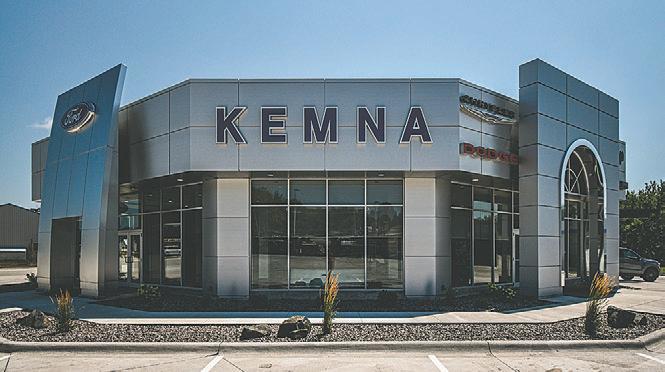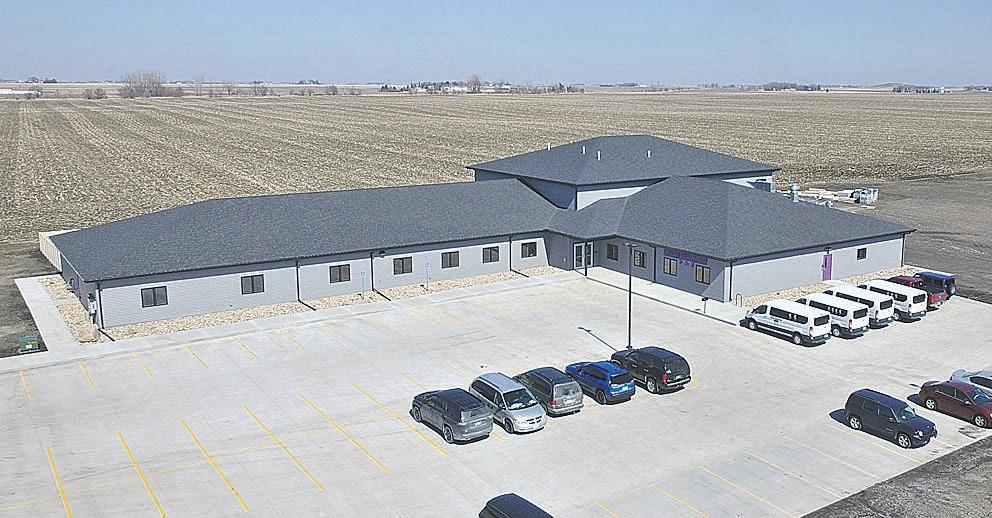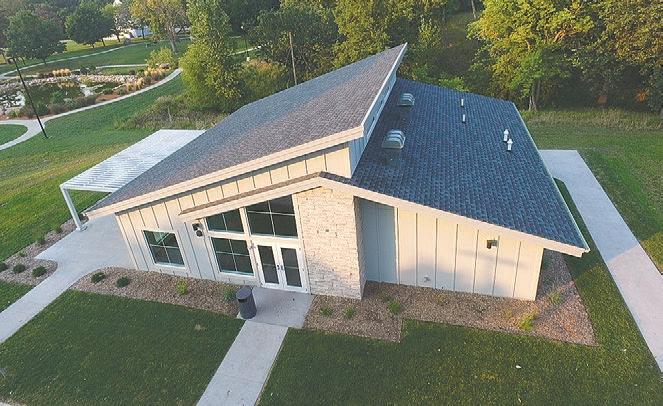
















































































































ALGONA — Eighty years ago, in the throes of the Second World War, 10,000 German prisoners of war called Kossuth County their temporary home.
It’s a piece of history of which many area residents are unaware, but is now featured on the silver screen.
“Silent Night in Algona,” a feature film written and produced by DJ Perry, of Collective Development Inc., and directed by Anthony Hornus, premiered Dec. 9 in Algona.


The film tells the story of the POW camp and the German POWs working on the family farms in the area. The story is based on true events from Algona businessman Donald Tietz’s childhood as a young boy on the farm in WW II. The Tietz farm, headed by Donald’s father, Rudy Tietz, is a main setting of the movie.

The film takes place between early November and Christmas Eve in 1944 in Algona.
The story in the film has three layers to it, the director said.
“A lot of the townsfolk were not happy that they were going to have the enemy in their midst,” Hornus said. “Then, the other part is about the officers and soldiers who are guarding the prisoners, and the final part is the Germans’ interaction among themselves and with the guards.”
According to the Camp Algona POW Museum website,
the POW camp was active from April 1944 to February 1946.
The Algona camp served as the base camp for 34 “branch camps” in a four-state region. Throughout its activity, Camp Algona’s monthly population was around 2,500.
The German prisoners held in these camps, Hornus explained, were mostly just common soldiers and draftees
who didn’t really want to be involved in the conflict.
He said the captured Nazi ideologues were usually sent to hard labor camps in Nebraska and Minnesota.
The movie was filmed in and around Algona last fall, as well as Heritage Park in Forest City and Whittemore, Hornus said. Dozens of locals were used as extras in the filming of the
movie, including Fort Dodge residents Mike Magruder and his son, Noah.
In all, Hornus said, about 200 people had a hand in making “Silent Night in Algona.”
When working on the film around Algona last fall, Hornus said the production encountered many locals who didn’t know that the city had once been home to a POW camp. The barracks buildings for the camp were sold or demolished immediately after the camp closed in 1946. Today, the site is owned by the city of Algona and is home to the municipal airport.
Gowrie
As Webster County’s second-biggest town, Gowrie is looking to expand even further, Mayor Bruce Towne said.
“We’re trying to keep things going like anywhere else,” he said.
The city has some property in the Wiley Addition on the town’s east side that are lined up with Origin Homes builders and Hubbell Realty of Des Moines to build new homes there, Towne said.
There are new housing forgivable grants available for those properties, he added. Those grants include up to $40,000 or 10% of the cost of new value added, whichever is less. There are also residential tax abatements over 10 years for new home construction available.
Gowrie is adding even more incentives for new home construction, including waiving the construction permit fee and providing free family passes to the Gowrie Municipal Golf Course, Gowrie Municipal Swimming Pool and the Wheels of GYC Roller Skating Rink.
A big change in Gowrie this year is the restaurant at the golf course. Mulligan’s is under new management and will be reopening in time for the Super Bowl.
“They’ve just spent the
last two and a half months remodeling the place and getting it up and ready to open,” Towne said.
The city is in the process of updating the city vehicles, including purchasing a new police car this year, Towne said.
The city and the Gowrie Development Commission are also working on their downtown facade program with forgivable grants for downtown property upgrades, Towne said.
“We’re looking to keep our business district active instead of letting it go deserted,” he said.
The City of Clare bid farewell to two long-time city employees in 2022. Sharon Gross, who had served as the city clerk for over 35 years, and Mary Fitzgerald, who had spent more than two decades reading the town’s water meters, both retired last year.
The Clare Community Center is getting back to being used regularly for the first time since COVID struck, Mayor Barb Passow said.
The town also built a new city shed for the town’s maintenance vehicles in 2022, Passow added.
The Clare Volunteer Fire Department will be hosting its annual pancake breakfast on
Feb. 12 at the fire station, 123 Front St. The pancake batter hits the griddles at 8 a.m.
The small northeastern Webster County town of Vincent has been focusing on its infrastructure lately.
“We’ve been working on our drainage on the northeast side of town as an ongoing project,” said Mayor Lynda Adson.
In 2022, the town also built a new building for the city snow plow.
“We’re always working on
community beautification,” Adson added.
Last year marked the conclusion of a multi-year update to Lehigh’s water treatment plant, City Clerk Theresa Grossnickle said.
“Our filter for our water plant was replaced,” she said.
“It was a large project.”
With the water treatment project complete, Lehigh doesn’t have any large capital projects on the horizon, Grossnickle said.
“We’ll just have our typical stuff like our normal road projects,” she said.
In June, the town held its annual Lehigh River Days.

“This year, we’re going kind of retro because it’s our 40year anniversary,” organizer Brett Smith told The Messenger before the 2022 event.
Lehigh River Days is something that Smith and the rest of the planning committee take great pride in.
“I think it’s a good tradition because it gets the community together and it’s a beautiful little town for people to come visit,” Smith said. “It’s a good time for everyone to get outside and enjoy the outdoors and do fun activities.”
The City of Duncombe celebrated its sesquicentennial in 2022. The town was founded in 1872.
In July, the Duncombe Betterment Committee organized the annual Duncombe Days to celebrate 150 years of Duncombe.
In April, Eric and Joline Klein, two longtime members of the Duncombe Volunteer Fire Department, retired after a combined 62 years of service, leaving a lasting legacy in the rural eastern Webster County town.
See TOWNS, Page 5D



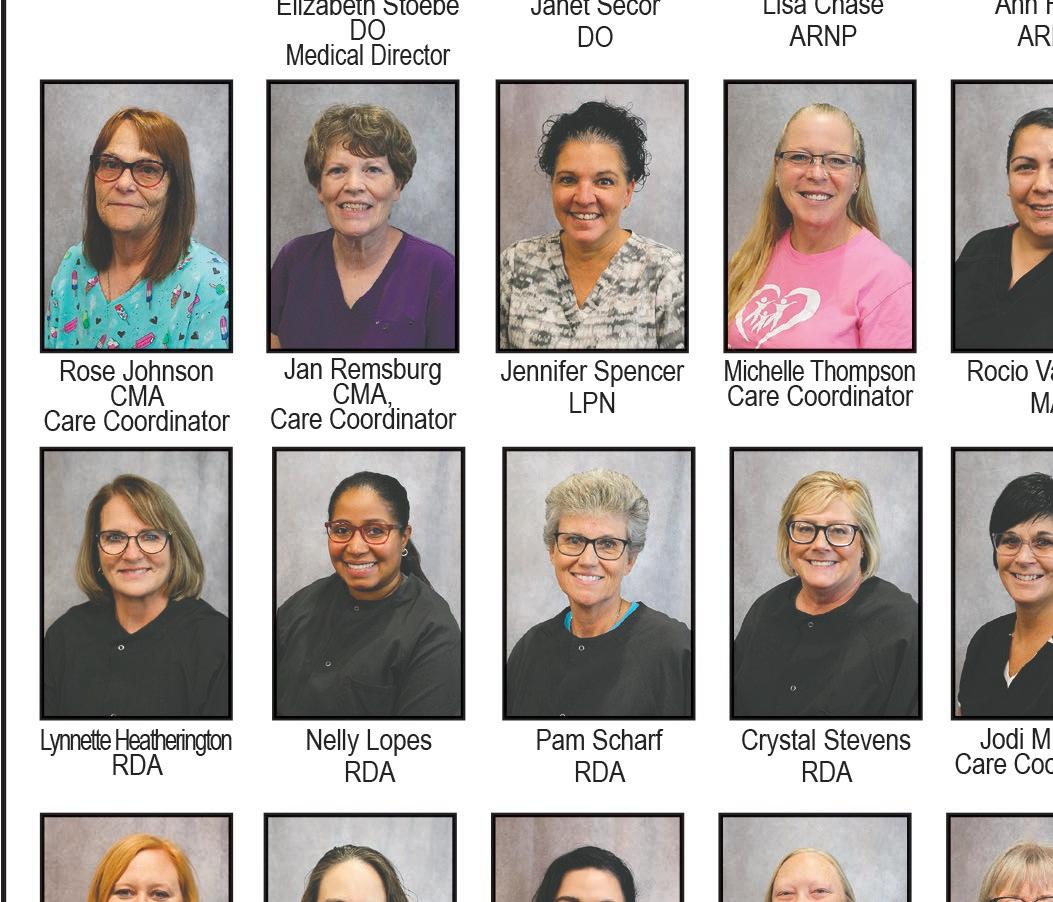

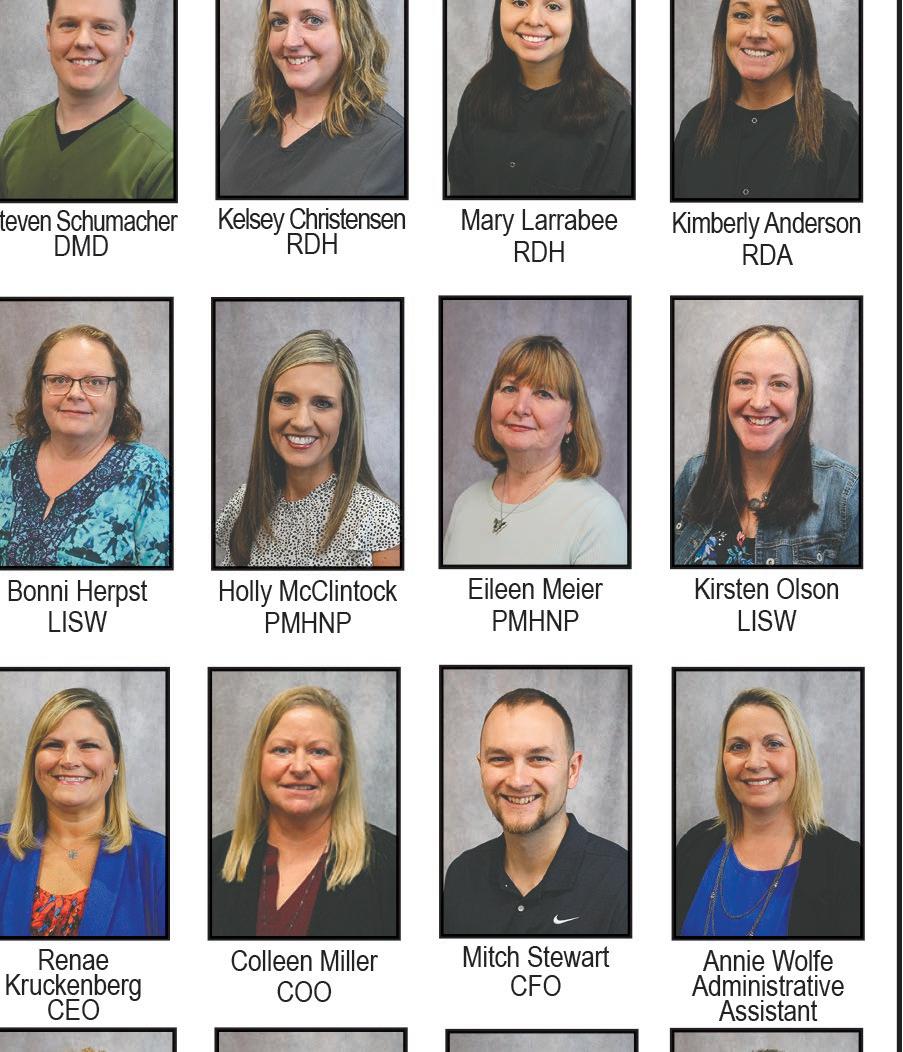




You probably associate the words public transit with family or friends in Chicago, Denver, or Minneapolis, who take a train or bus to work. Some of these people get by with one car, or avoid buying a second car, by relying on public transportation.
You may be surprised, though, to learn most of America’s 1.6 million households without access to a car are in rural counties, not cities.
How do these people get around?
Recently, Shelly Mahan, transit director for MIDAS since fall 2021, invited me to her Fort Dodge office to find out.

MIDAS was founded in 1972 as a State of Iowa Council of Governments organization of six north central Iowa counties: Calhoun, Hamilton, Humboldt, Pocahontas, Webster and Wright.
These inter-governmental agencies provide services counties aren’t staffed or funded to manage on their own, including planning, community development, housing and public transportation. An 18-member board, with three representatives from each county, sets policy for the agency at monthly meetings, which are open to the public.
Today, 46 small, red-and-white buses provide transit service in the six-county region.
A single mechanic maintains the fleet at a shop in downtown Fort Dodge.
A typical MIDAS bus seats 28 passengers, and has a built-in lift to allow the infirm or handicapped to travel without leaving their wheelchairs. All
buses are equipped with cameras; some facing forward, some to either side, and some focused on the bus interior.
The cameras run whenever the bus is moving, and, explains Mahan, “are for the safety of both the public and drivers.” Recordings are only accessed in case of accident, complaint of driver misconduct, attacks on drivers, or other, similar incidents.
Buses are based in MIDAS garages in Fort Dodge, Clarion, Humboldt and Webster City, positioning them close to the work they do each day.
Mahan says demand for transportation in each county and town is different, and
may vary daily, seasonally, or by time of the month.
The most common need is transportation to work, school, grocery or other shopping, medical appointments, or for social reasons. Most customers are elderly, may no longer drive, don’t own a car, or have a handicap.
Despite a reputation as “transport of last resort,” however, Mahan stresses, “our service is open to anyone, any time.”
Most buses operate in what MIDAS calls “demand-responsive” service. To the public, it’s simply “dial-a-ride.” Most people book in advance, calling MIDAS, and telling the operator where
they live or wish to be picked up, where they’re going, and when they need to be there, and return.
MIDAS takes it from there, with dispatchers who work from 6 a.m. to 5 p.m. Monday through Friday arranging details of each service.
Adults pay $2.50 per trip with advance reservations for this typically door-todoor service. Seniors, those 60 or older and who’ve completed an application through Elderbridge Agency On Aging, may obtain an ID card entitling them to a reduced fare of $2 per trip.
Where necessary, MIDAS runs other services to meet local needs.
One example is the use of dial-a-ride service by students going to schools in Webster City. This service is used by 25 students every school day, and is wellsuited to students who may, for a variety of reasons, be unable to use regular school bus service.
Another MIDAS bus runs from Fort Dodge to the Prestage Foods of Iowa, the meat processing plant near Eagle Grove, helping workers who otherwise couldn’t get to work, and helping the company hire badly needed workers.
See MIDAS, Page 5D
"Our service is open to anyone, any time.”
— Shelly Mahan MIDAS transit director
Continued from Page 4D
Another such route takes inmates of the North Central Iowa Correctional Facility in Fort Dodge to employment in Humboldt. Several other employers in the six-county region want to start such service as employees struggle with the high costs of owning and operating a car, but Mahan noted “we just don’t have the drivers at this time.”
Funding for MIDAS transit is provided by the United States government through the Federal Transit Administration’s section 5311 non-urban transit program. These funds provide capital to build garages, terminals and new buses, and operating funds

to cover driver's wages and maintenance expenses, and can only be used by cities or regions of 50,000 people or less. Section 5311 funds have been available each year since 1979, and today support demandresponsive transit, similar to that run by MIDAS, in all of Iowa’s 99 counties.


If you wish to try MIDAS transit service, phone 515-573-8145 for more information, or to make a reservation for diala-ride service to your door.
If you’re 60 or older, and wish to get a senior ID card qualifying you for reduced fares on MIDAS transit, phone Elderbridge Agency On Aging at 515955-5244.


Continued from Page 2D
Eric Klein’s introduction to firefighting was an abrupt one — he was outside doing yard work when his brother-in-law, who was the Duncombe fire chief at the time, came by and dragged him to a fire he needed more hands for.

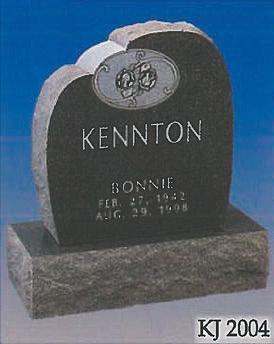

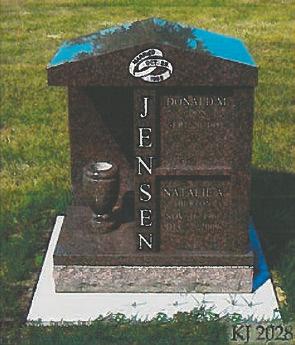
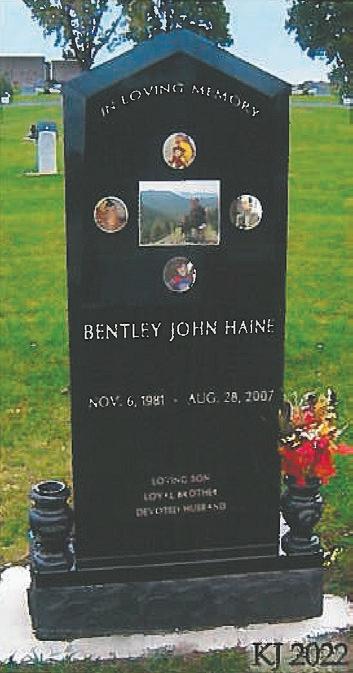
That was 1987.
Over the years, Eric Klein has worn many different hats for the local fire department. He’s been everything from a firefighter to emergency medical technician, from secretary treasurer to captain to assistant chief to chief.
Joline Klein joined the Duncombe department in 1995, and it was Eric’s

brother-in-law who brought her in as well. She had been giving him a hard time for not having any women volunteer.
“I always give the guys heck about how old they were and how they didn’t have any women in the department,”
Joline Klein said. “Ten or 15 minutes later, I had my own bunker gear.”
She was the first female volunteer at the department, but since then it has seen a few female firefighters and EMTs.
She also served as a secretary treasurer, but most recently served as the emergency medical services director.


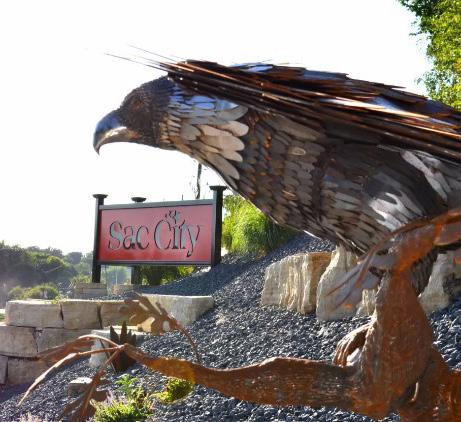 BY DOUG CLOUGH editor@messengernews.net
BY DOUG CLOUGH editor@messengernews.net
SAC CITY — In an era when towns do their best to differentiate themselves, Sac City is going beyond the popcorn ball. And it’s a pretty darn spectacular popcorn ball for sure, built in 2016, weighing 9,370 pounds and standing taller than eight feet.

But, even with its grand stature, it sets in the shadow of the artwork you’ll find throughout this community of 2,060 people.
Fine arts have deep roots in this county seat. A music conservatory attracted many students in the late 1800s; the Chautauqua movement brought in quality performers, an opera house graced the downtown area, and residents supported fine architecture and public monuments. In recent years, public art has transformed the town.

In 2017, the late John H. Criss left $5.7 million in a trust to be used for beautification in Sac City. Criss was the owner of Chief Clothing Co., and he was a lifelong resident of Sac City. Criss named Renae Jacobsen, Dewey Reese, and the mayor of Sac City as trustees to oversee citywide beautification efforts. The trustees
SAC CITY, Page 7D
Continued from Page 6D
have commissioned many works of art throughout the community.
Tanner King, a metal sculptor from Sac County, has created pieces ranging from giant dandelions to realistic birds to huge cattails. King’s many works join existing murals, Bubba Sorensen’s Freedom Rock, and a wide assortment of granite works honoring veterans from the community. The trustees have commissioned many works of art that create a vibrant community.
“A vibrant arts community helps propel a thriving economy,” said Jamie Lawrence, city administrator. “Sac City has a rich history of promoting the arts.”

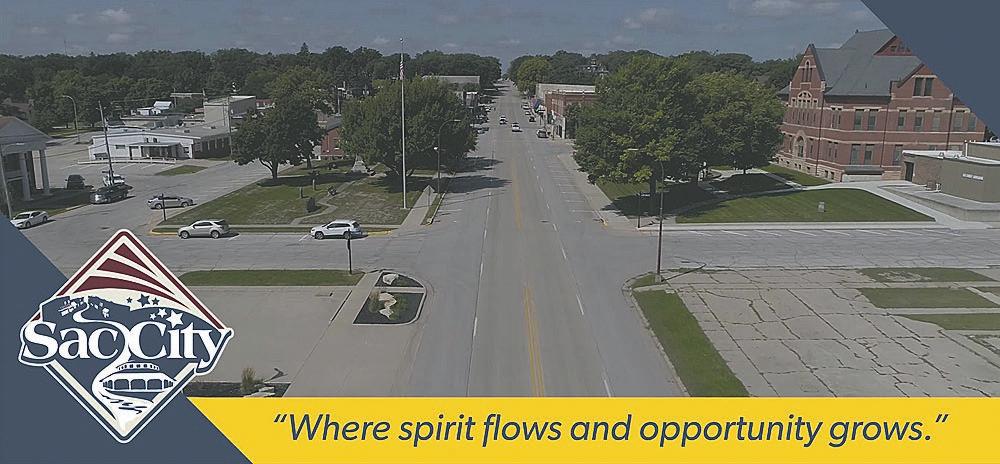
The Chautauqua Pavilion was erected in 1908 to demonstrate the community’s deep artistic roots; this movement was housed in a large pavilion that remains as a significant example of outdoor auditoriums in the state.
The Sac City Arts Council has helped support performing and visual arts in the community. The group has worked on
numerous projects including cemetery walks, featuring the stories of some of Sac City’s founders; a concert by the 34th Iowa Army Band; concert by the Stan Kenton Legacy Orchestra, numerous concerts by folk musicians, and partnering with the local library, museum, and school for enrichment events.


Much of Sac City’s artwork — cattails, dandelions, and realistic birds — reflects the nature that surrounds the community.
Located along the Raccoon River and adjacent to Chautauqua Park, Riverside Campground offers a secluded area for camping while still being a five-minute walk from downtown Sac City.
North Raccoon River Water Trails, located in the Raccoon River Valley, offer access to kayaking, canoeing, and tubing. Sac City has multiple carry-in access points through town with riverside primitive camping.

Created in 2021, the North Racoon River Nature Trail makes for a great 45-minute walk along the Raccoon
River. Located next to Riverside Park and Oakland Cemetery, this trail is close to downtown while also having an isolated feel, making it a perfect place to get away for an afternoon walk with your dog or a friend. Constructing a new river access in Riverview (Lions) Park will allow even greater enjoyment of the river. Primitive camping and other amenities will be coming soon.
The Sac City Trails Committee has worked to develop and improve both bike trails and water trails in and around Sac City. Developing a trail head in Criss Park, complete with a bike repair station, and marking various on-street trails helps attract visitors and keep residents active.
The North Raccoon River is a great resource for kayaking and canoeing. Cleaning the riverway, adding a fence to a bridge on Main Street, and improving access to the river are all significant parts of the committee’s plan that is quickly providing additional opportunities in Sac City.
-Submitted photo
CATTAIL COVE, featuring giant cattails created by metal sculptor Tanner King, offers a gathering space in the heart of the business district. Located in the center of downtown Sac City, it was voted the 2020 Best Beautification Project by Main Street Iowa, according to the town's website.
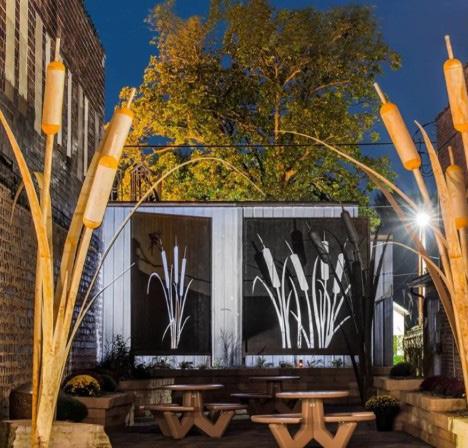
Did you know GreenState is consistently ranked in the Top 1% Nationally for returning profits with better rates & lower fees? That means one of the Top financial institutions in the country, is here in Fort Dodge.
Did you know GreenState is consistently ranked in the Top 1% Nationally for returning profits with better rates & lower fees? That means one of the Top financial institutions in the country, is here in Fort Dodge.

Rewards Checking
Rewards Checking
CDs & IRAs
CDs & IRAs
Money Markets
Money Markets
Insurance
Insurance
Home / Auto Loans
Home / Auto Loans
Credit Cards
Credit Cards
Investments & Trust Services
Investments & Trust Services
Business Loans
Business Loans
1207 Central Avenue
1207 Central Avenue
515-955-0401
515-955-0401
 By BILL SHEA bshea@messengernews.net
By BILL SHEA bshea@messengernews.net

ROCKWELL CITY — In the not too distant future, when someone is injured anywhere in Calhoun County, the first person to help may be a neighbor with some training and a bag of basic medical gear.
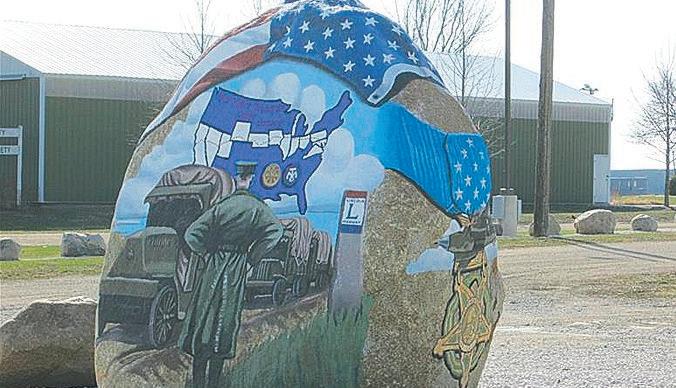

Calhoun County is seeking to join a new state program that would provide money to recruit, train and equip a new group of volunteers who could reach emergency scenes quickly and provide lifesaving care in the minutes before an ambulance arrives.

The initiative that would make that possible is the Rural Emergency Medical Service Pilot Grant Program.
Lt. Gov. Adam Gregg discussed the program Feb. 3 at the Rockwell City Public Library with representatives of
local government and emergency medical service providers. He said the state is looking for two communities willing to “lean into this new model and make it work.”

He said the state has $100,000 in the Governor’s Empower Rural Iowa Initiative for the emergency medical program.


He said two counties will be selected and will be given $50,000 each. Those counties, he said, will have to contribute $25,000 in local money as a match for the state money. Thus, each county would have $75,000 for the effort.


Kerrie Hull, director of Calhoun County Emergency Medical Service, said the county will file a pre-application for the grant.
Final applications will be due May 1 and counties will learn if they will get the





money on June 30.


People who volunteer to be part of this program would not have to become emergency medical technicians or paramedics. Gregg said they would have to complete about 10 hours of training on things like CPR, first aid, controlling severe bleeding and operating an automatic external defibrillator. He said the goal should be making the training easy to complete in one or two sessions.
Gregg said the volunteers would be equipped with a “go bag” of medical gear and a defibrillator. He said they would be alerted by 911 dispatchers via a phone app.
The lieutenant governor said he was inspired to create this pilot program after a trade mission to Israel. There, he met the leader of a volunteer EMS group called United Hatzalah, which uses a system of
volunteers with basic training and gear to respond to medical emergencies. He said in Jerusalem, this system puts a trained volunteer on a scene in about 90 seconds. Elsewhere in Israel, he said, it puts a volunteer on scene in about three minutes.
If Calhoun County is accepted into the program, the new volunteers would supplement, not replace, the existing emergency care providers.
Calhoun County Emergency Medical Service is the only paramedic level service and the only one with paid personnel. It has ambulances in Rockwell City, Manson and Lake City. However, not all of the ambulances may be staffed at the same time due to a lack of EMTs or paramedics.
Lohrville and Farnhamville have ambulance services that provide basic life support.

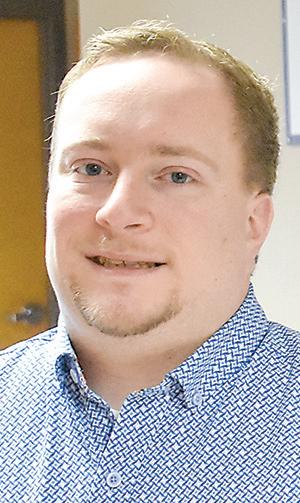 By BILL SHEA bshea@messengernews.net
By BILL SHEA bshea@messengernews.net
HUMBOLDT — Kids in the Humboldt area will be able to let their imaginations run wild in a new playground complex that looks a bit like a fairy-tale castle.

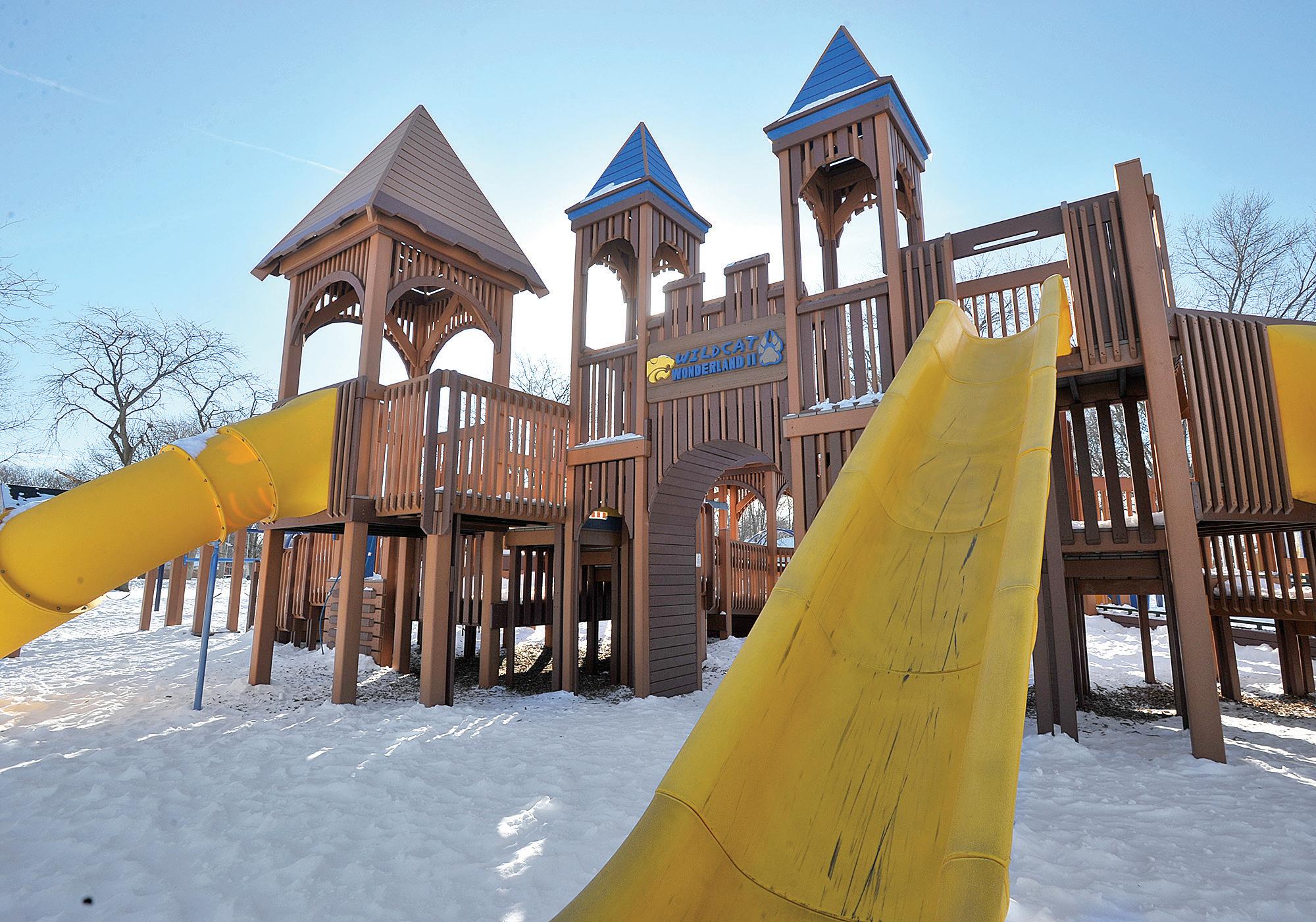
Located in Taft Park, it’s called Wildcat Wonderland.
It opened in September, after about 400 volunteers spent a week assembling the structure.
“That was a really cool opportunity and our signature project of the year,” said City Administrator Cole Bockelmann.
The play complex cost about $500,000. It was a partnership between the city government, the Humboldt Community School District and the Humboldt Community Foundation.
Bockelmann said about $240,000 was raised for the project.
Humboldt leaders are now completing or planning several
other projects that won’t be as fun as Wildcat Wonderland, but will enhance the community’s quality of life.
A complete overhaul of the wastewater treatment plant and the main lift station that pumps sewage to the plant is underway. Bockelmann said
construction will continue into 2024.
He said it is a $3.8 million project.
The city has a $1.7 million low interest state loan and a $1.5 million Federal Emergency Management Agency grant to help pay for it, he added.
Among the projects in the planning stages is a new industrial park, the Three Rivers Industrial Park, on the city’s northwest side. Construction of it is expected to begin in 2024.
Sumner Avenue, the main street through downtown
Humboldt, will be resurfaced next year. Bockelmann said workers will grind off a couple inches of the existing pavement and put new asphalt down.
Also in the planning stages is a new Eagle Ridge Trail, which Bockelmann said will extend west from fish and swan ponds.
“That was a really cool opportunity and our signature project of the year.”
— Cole Bockelmann City administrator

OTHO — Otho’s town motto is “Friends and neighbors working together.” For the last several years, the Otho Betterment Committee has looked for different ways to exemplify that in the small Webster County town.
In August, with the help of some neighbors, the committee set up a Little Free Library and Little Free Pantry near Otho City Hall.
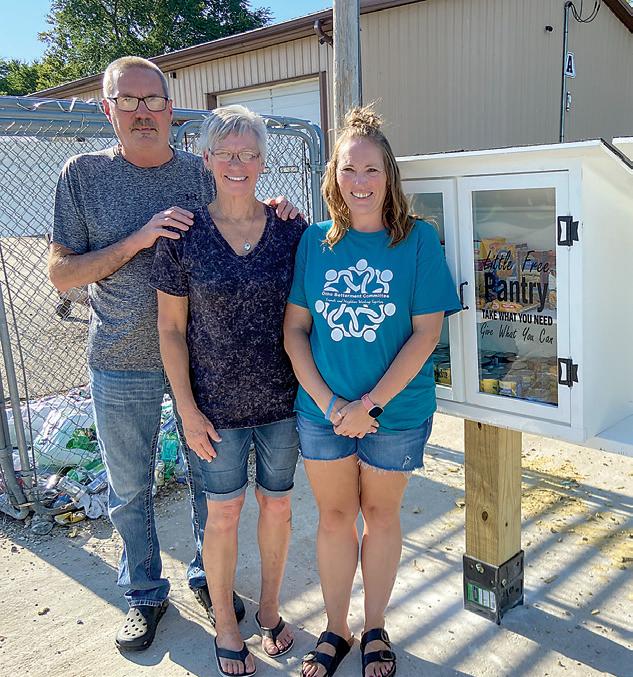
“I had seen some other ones online, the libraries especially,” Betterment Committee President Missy Ewing said. “There’s a couple in Fort Dodge and we’ve seen one at Twin Lakes, so I just thought it would be a fun idea to have one here.”
The Little Free Library movement started in Wisconsin in 2009. According to the official website, a Little Free Library is a “‘take a book, return a book’ gathering place where neighbors share their favorite literature and stories.” Anyone can stop by and pick up a book, or leave a book.
Ewing decided to enlist the help of her parents, Larry and Lynn McBride, of Coalville, to build the pantry boxes. The McBrides not only built the boxes, but donated them as well.
To kick off the initiative, Ewing filled the pantry with a variety of nonperishable food items. The library was stocked with children’s books and DVD movies donated in memory of George and Candy Bartlett. The library and pantry had been up for about two weeks when Ewing talked to The Messenger last August.
“Every day I come by here, they’re stocked and there’s new stuff that’s been added,” she said. “We’ve had a really good response. On the second day, I came in to look and there was already additional food other than what I had put in.”
Some Otho neighbors may also leave fresh produce from their gardens in the

pantry, Ewing added.
Residents who need a little hand-up are encouraged to take what they need from the pantry, while those who may have extra are encouraged to donate to help their neighbors. “I think it helps, especially for people who can’t get into town,” Ewing said.

The Little Free Pantry is also completely anonymous. “Somebody could come here if they need something, and nobody would care or nobody would say anything,” Larry McBride said. He added that though the pantry is located in Otho, nearby neighbors are also welcome to use it.
Eventually, the Betterment Committee will stock personal hygiene items, toilet paper and feminine products in the pantry, Ewing said.
“We can benefit from this for years,” she said. “It makes me feel good that it is being used.”

Edge Nature Center

MANSON — The Calhoun County city of Manson celebrated a big birthday last year.

It marked 150 years since the town was established. That milestone was celebrated June 24-26 with a series of events, including the Crash My Crater concert featuring country star Chris Janson.
Residents of Manson have more than just 150 years of history to be proud of, as recent developments have shown.
Area kids are now playing on two recently created ball fields at the Manson Area Community Center.
These youth ball diamonds were developed through a partnership of the Youth Cougar Club, led by Brandon Bush and Dave Pearson, the Manson city government and the Manson Northwest Webster Community School District. More than $130,000 was raised to help pay for the ball diamonds.
The next phase of the project will involve building a concession stand.
Manson residents also have the opportunity to play the fast growing sport of pickleball close to home. The game of pickleball is played on a smaller version of a tennis court. Players use solid paddles to hit a wiffle ball over the net.
Brothers John and Gene Zook donated money to create a pickleball court at the 10th Street courts. The donation was a memorial to their younger brother, Jerry.
The completed pickleball court debuted in August 2022.
For those who like to walk,
run or ride their bicycles, a new trail is being developed in Manson. Called the Seavert Trail, it is planned to be north of Iowa Highway 7. Another source of Manson pride is its nonprofit grocery
See MANSON, Page 13D
The water flowing out of faucets in Manson will one day be coming from Fort Dodge.
Fort Dodge will supply water to the Calhoun County city under a memorandum of understanding approved in 2021. In late 2022,
an engineering firm was hired to design the pipeline connection between the two cities.
Manson needs to supplement its current water supply, but repeated attempts over several years to drill a new well have not produced sufficient water. In early 2021,
an engineering report recommended that Manson connect to Fort Dodge to get adequate water.
“Fort Dodge’s water system has sufficient capacity to serve Manson for an average daily demand of 225,000 gallons per day and a peak day demand of


385,000 gallons per day based on a 20-year water use projection for Manson,” Fort Dodge City Manager David Fierke said,





Under the agreement between the two cities, Fort Dodge will:

n Provide water that meets all federal and state standards.

n Design and construct a pipeline from the city to a point near Fairbanks Avenue and 190th Street.
n Bill Manson for the water.
Under the agreement, Manson will:
n Design and build a pipeline from Fairbanks Avenue and 190th Street to the Manson city limits.
Continued from Page 12D
n Maintain a water distribution system within its city limits.
n Pay Fort Dodge for the water.
In September, the Fort Dodge City Council hired McClure Engineering Co., of Fort Dodge, to design the eastern end of the pipeline. It will begin at the industrial park called Iowa’s Crossroads of Global Innovation, which already has city water, and extend west along Iowa Highway 7 to Fairbanks Avenue.


At the same time, the company will design plans for increasing the size of water mains in the industrial park to accommodate future growth. The company will be paid $188,500.
store. Manson Hometown Grocery opened in November 2020 after another grocery closed, leaving the city’s residents with no place close to home to buy food. The store is now in its second year of operation, and its small staff continues to fine tune the operation. Looking ahead, the 2023 version of the Crash My Crater concert has been scheduled. Featuring Parmalee and Matt Stell, it will be held on June 24.
WEBSTER CITY — Hamilton County has a unique opportunity for adults to urge young children to consider college when they get to that age.
It’s called the Financial Literacy Council of Greater Hamilton County.
According to Barb Wollan, who is the organization’s secretary, the United States ranks 14th in the world in financial literacy.
The importance of that statistic is that research shows lack of financial knowledge and skills can limit people’s financial wellbeing throughout their lives.
That includes planning how they’ll pay for a post-secondary education.
“I believe in the importance of building financial skills,” said Wollan, who is also a human sciences specialist with Iowa State University Extension and Outreach. “That’s why I support the Financial Literacy Council of Greater Hamilton County and their initiatives to bolster financial literacy skills in our community’s youth.”
The council is a new nonprofit, she said. Its primary project is launching a countywide child savings account program in partnership with Availa Bank.
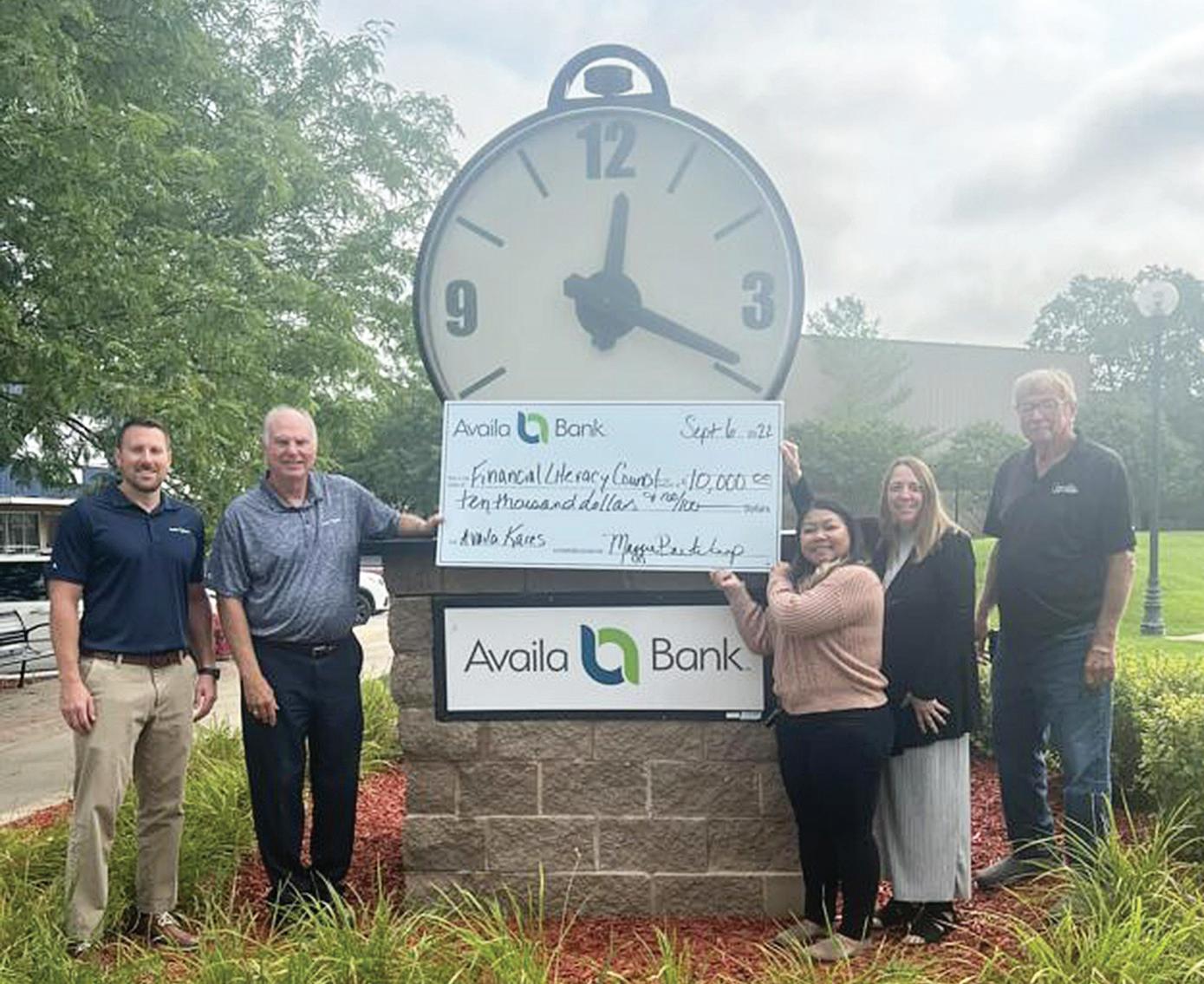
“We are grateful for the Availa Foundation’s ongoing support for this project,” Rick Young said. He is chairman of the council.
“However, Availa does not provide any funds for operating the program, which does require substantial data entry, communication with the College Savings Iowa 529 program, and outreach to parents. We have an individual contracted for a few hours a month to manage all of that, which costs money,” he added.
“We hope to make this a true community effort by getting support from dozens, or
even hundreds, of local organizations and individuals.”
Right now, the council is looking for support on any level — from $25 to $100 to $1,000. You can do so at www. financialliteracycouncil.com/donate.
“Our hope,” said Young, “is that people will make giving to the financial literacy
council an annual habit, but we welcome one-time contributions.”
In Hamilton County, the program is called AvailaKares. It establishes a 529 college savings plan with a $100 initial deposit for each kindergarten graduate of
a Hamilton County school, after parents complete an enrollment form.
Availa is the primary funder of the accounts, but Hamilton County also contributes a portion of the funding. Those funds are then available for the student to use for any type of accredited post-secondary education. They remain available to the young person if they don’t go directly on to school. They can access the funds up to 10 years after graduation.
According to Barb Wollan, research on similar projects in forward-thinking communities has shown that children who have even a small amount of money set aside for their education after high school have better academic outcomes. They are more likely to complete high school, and more likely to enroll in post-secondary education.
“The thinking is that when a child grows up knowing there is money set aside for their future education, that creates a vision — they start believing that further education is possible and even likely for them,” Wollan said.
Added to that, she said, is the fact that their community wants to invest in them. It’s an important motivator for students.
The ultimate vision of Hamilton County’s Financial Literacy Council is that other donors would step up in the future to make additional contributions to children’s accounts as they reach further educational milestones.
Establishing a broad base of operational funding at about $7,000 a year will enable the Council to take the time and energy currently devoted to maintaining operations and instead focus it on growing its financial literacy community outreach efforts.





EAGLE GROVE — A little bit of Eagle Grove spent the holidays in the nation’s capital.

Two dozen third- and fourth-grade students at Eagle Grove Elementary School designed and decorated paper ornaments to adorn a Christmas tree on the grounds of the White House as part of the America Celebrate program.
“Any time there is a project that is going to get my kids’ art out there, I am all for it,” said elementary art teacher Meghan Erdman. “I believe in getting materials into the hands of kids. I work in a community with lower income families, so it is important for me to help provide opportunities to get kids to create, to share their feelings and emotions, and to share their ideas with each other, to express and explore through art.”
The Iowa tree was one of 58 smaller trees that surrounded the National Christmas Tree in President’s Park outside the White House. The trees represent states, territories and schools managed by the Bureau of Indian Education and the Department of Defense Education Activity.
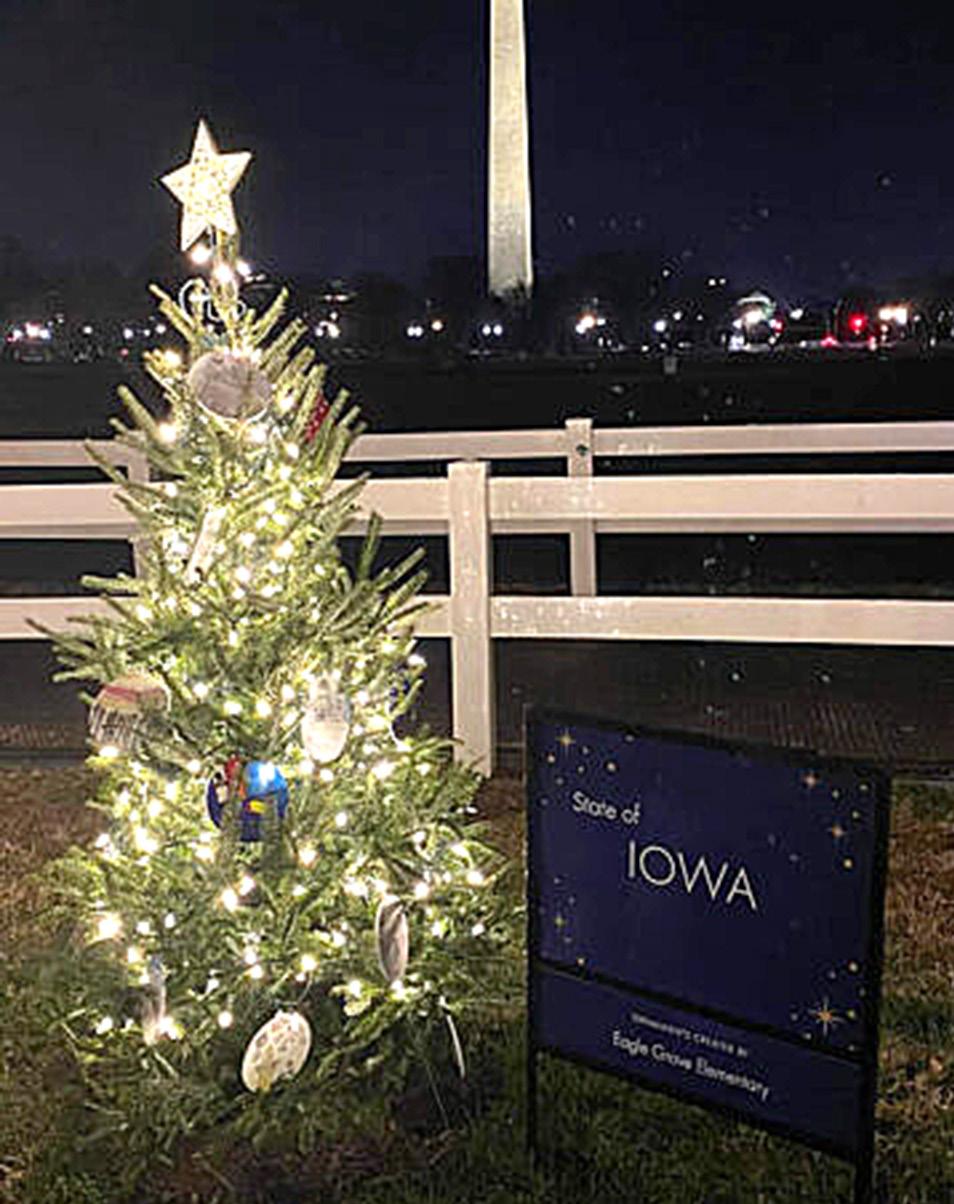
Erdman isn’t sure how, but the Eagle Grove students were invited to represent Iowa last holiday season.

“The students thought it was super exciting that our ornaments are going to be where the president is,” Erdman said.
Erdman selected four students from each of the third- and fourth-grade sections of art class to create the paper ornaments. The theme of the ornaments was “What Makes Iowa Beautiful.”
“We brainstormed and we discussed ideas like barns, animals, the state bird,” she said.






The ornaments were unveiled in Washington, D.C. on Nov. 20. The 100th annual National Christmas Tree

lighting was Dec. 11.


The Christmas ornaments remained on the trees for public viewing through Jan. 1.
When the ornaments were taken down at the end of the holiday season, they were added to the collection of the National Archives.



“When I shared with the students that their art will forever live in Washington, D.C., their jaws hit the floor,” Erdman said. “Some students have never traveled as far as Fort Dodge, so I showed them on a map where their artwork will be displayed.”
Since the students wouldn’t be able to travel to Washington to see their ornaments on the Christmas tree, Erdman set up a sister tree in her classroom and decorated it with copies of the ornaments the students created.

LAKE CITY — In 2020, the City Council in Lake City faced a decision that many towns with 100-year-old buildings must make. Was it time to build a brand new community building or was the Memorial Building worth saving?
“There was an argument for a new Morton building,” said Nick Gorden, second-term councilman. “It was one of the cheaper alternatives, but we wanted to explore saving the Memorial Building. It was built in 1920 in honor of those who served in World War I. The history is a compelling enough reason to consider renovation.”
In the end, preservation of history prevailed, and the council began plans to save the two-story, brick building.
In 1990, the building was placed on the National Register of Historic Places, and it seemed a shame to topple a building that meant so much to the residents of Lake City. The major intent of the renovation is to allow residents to continue making memories in the building where their parents, their grandparents, and their great-grandparents had been doing so for more than a century.
“Once finished, we really want to market the building
for wedding use,” said Gorden. “Wedding receptions are fun celebrations — and profitable, and the income will be used for maintenance and improvements.”
Renovations include the entire building, the main components being the Grand Hall, Legion Hall, kitchen, and
bathrooms, which are integral to future events.
With bids being let, the city’s residential architectural artist, Paul Iverson, was selected and the city has forged ahead with restoration of this historical structure. Phase one was finished in 2021 and included the main entrance, the Grand
Hall, kitchen, and bathroom restoration. Phase two included the remaining first- and secondfloor windows, a museum of Lake City history, and improvements to the Legion and Veterans of Foreign Wars (VFW) rooms. Phase three will add an addition of two meeting rooms above the
north end of the Grand Hall, as well as basement and exterior improvement.
“Paul has taken the lead on this project,” said Gorden, “and has been a great asset ever since. He’s custom-made so much of the work that couldn’t be saved, but had to be replicated. We’ve subcontracted work to a painter from Carroll who has also done wonderful work. Of course, the wiring and the HVAC system has all had to be replaced as well.”
A project of this magnitude has required a substantial budget, and Lake City has contributed $600,000 according to Gorden.
“There have been many fundraisers as well, bringing in nearly $350,000. We held a gala fundraiser in the Grand Hall and also brought in a band for New Year’s Eve for a dance, which brought in additional funds. We’ve also applied for and received grants. We are very blessed to have people excited about this project.”
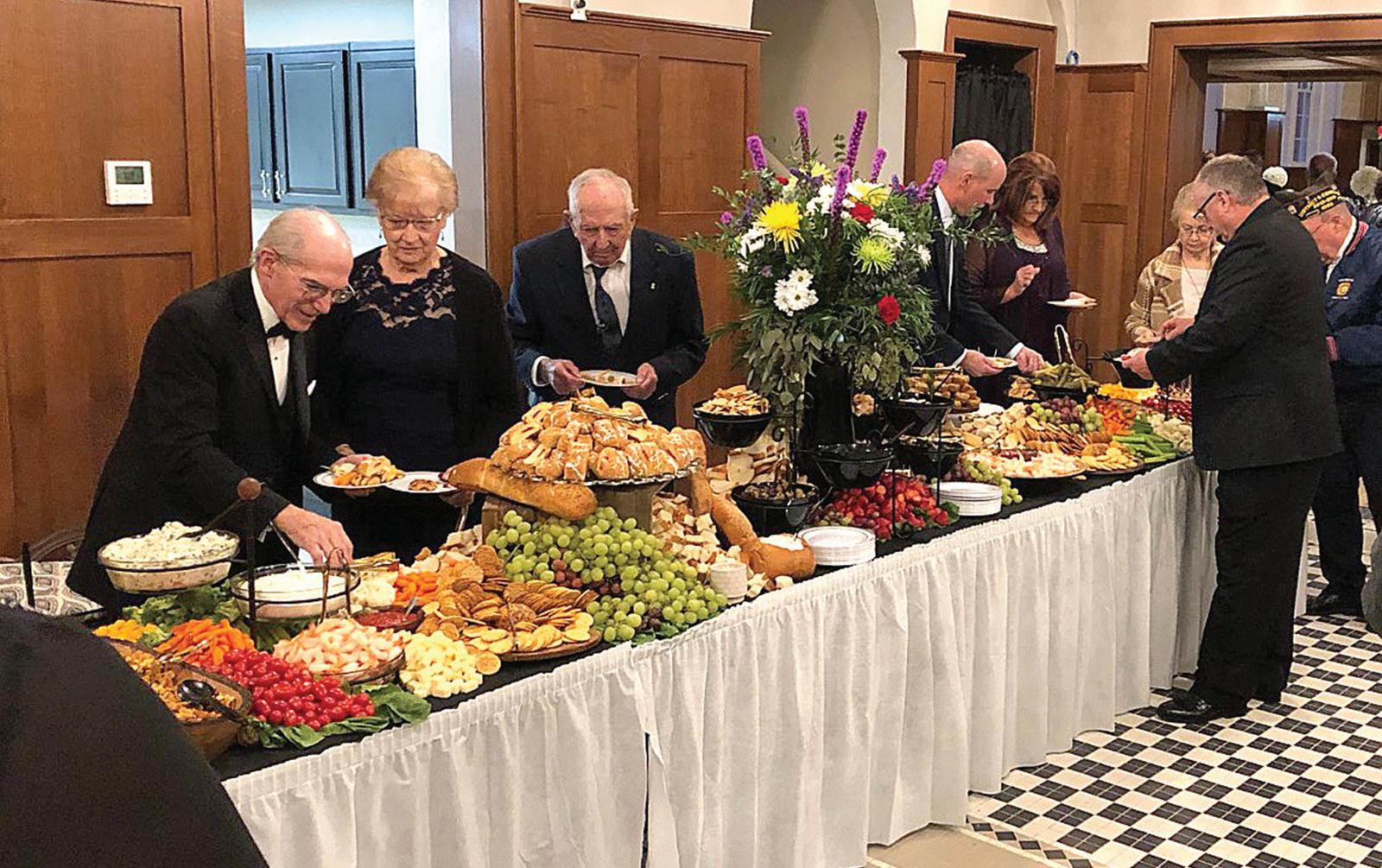
The estimated total cost of the project is $1.2 to $1.3 million, and the completion date is dependent on how fundraising proceeds.
The renovations are also being completed with the future in mind as well as the youth.
See LAKE CITY, Page 17D







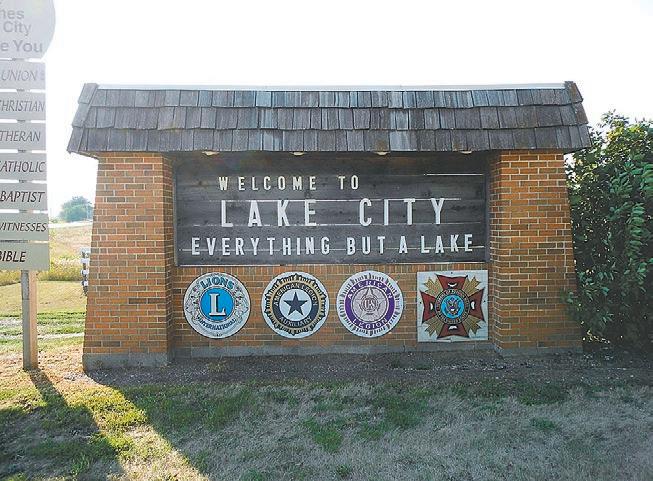

Continued from Page 16D
“Part of the upstairs is going to be a museum,” said Gorden. “There will be a timeline on the old balcony wall that includes a snapshot of what’s occurred in the world, United States, Iowa, and in Lake City at the same time. We have a great group of people who have toured other museums to see what makes them successful; their feedback has been to include interactive video as well as QR codes for real-time access to
information.









“For now,” Gorden continued, “it’s just satisfying to see the energy, skill set, and compassion of the people working on the project and those who support it through volunteering or monetary donation. If local people don’t make these things happen, it’s not going to happen. So far, the right people are stepping up to the plate and executing this project a day at a time.”

-Submitted photo





WHILE THE LAKE CITY PROJECT has required infrastructure changes, such as a new HVAC system and updated wiring throughout, the building committee has enjoyed adding a "wow" factor. The etched glass railing replaces the area that used to be a balcony in the building. Paul Iverson, the city’s residential architectural artist, has taken the lead on the renovation.
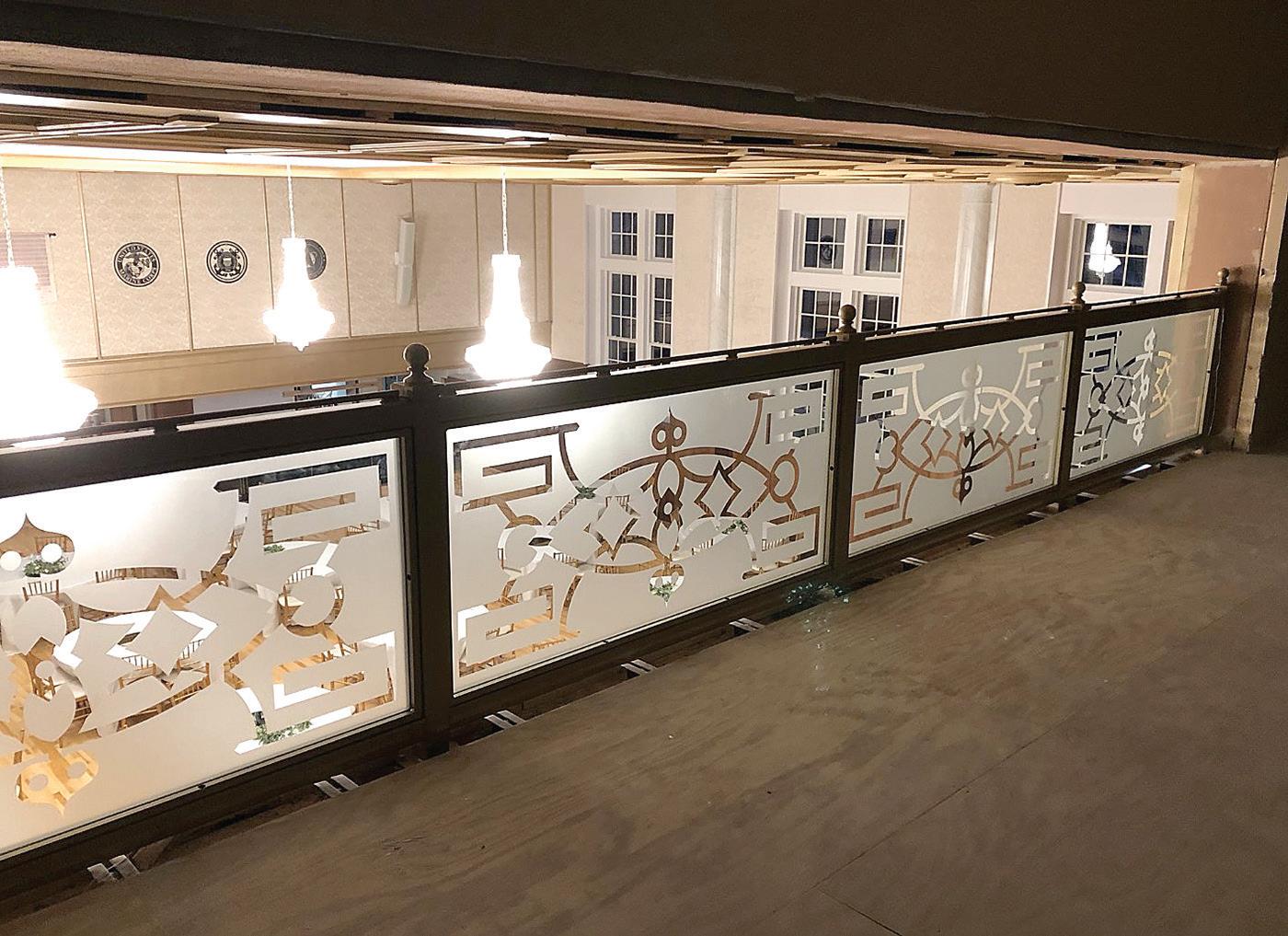
POCAHONTAS — It’s hard to beat the energy of Pocahontas Mayor Jada Hallberg. In an era when some residents move to the big city and towns feel the subsequent economic impact, Hallberg has the positive vibe that people want to follow — and an aura of a person they want to be around.
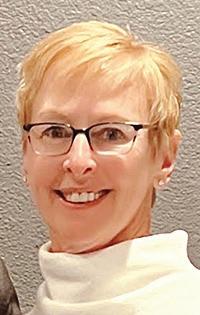
Pocahontas, a town of 1,867 people, was an overnight stay last summer for more than 10,000 of its closest friends during RAGBRAI. No one knows better than Hallberg how constituents feel about a traveling party on wheels during late July heat.

“Of course, there’s concern about the tidiness of the town,” said Hallberg, “and we — a committee of 25 or so people — felt that we could really rise above that with well-placed garbage receptacles and a friendly atmosphere.”
And Hallberg was right.
“Ever since RAGRAI left, I’ve been stopped by naysayers on the street who said they were wrong about their impression of the cyclists and the overall event,” said Hallberg. “Everyone
has been pleasantly surprised with how they left their camping areas and our town in general. It was a great experience and a wonderful way to show off Pocahontas.”
It’s one thing to lead, however, when the entire region is watching and quite another when you are focused on your
own town with your own citizens.
“Housing has always been an important topic in small towns,” said Hallberg, who is in her second year as mayor, “especially when you are landlocked by farm ground. We love our farm neighbors and realize that we must do the best
-Submitted photos
ABOVE: The city of Pocahontas has a threephase plan to bring housing into the area pictured above, which will be known as Prairie Estates, according to Mayor Jada Hallberg.
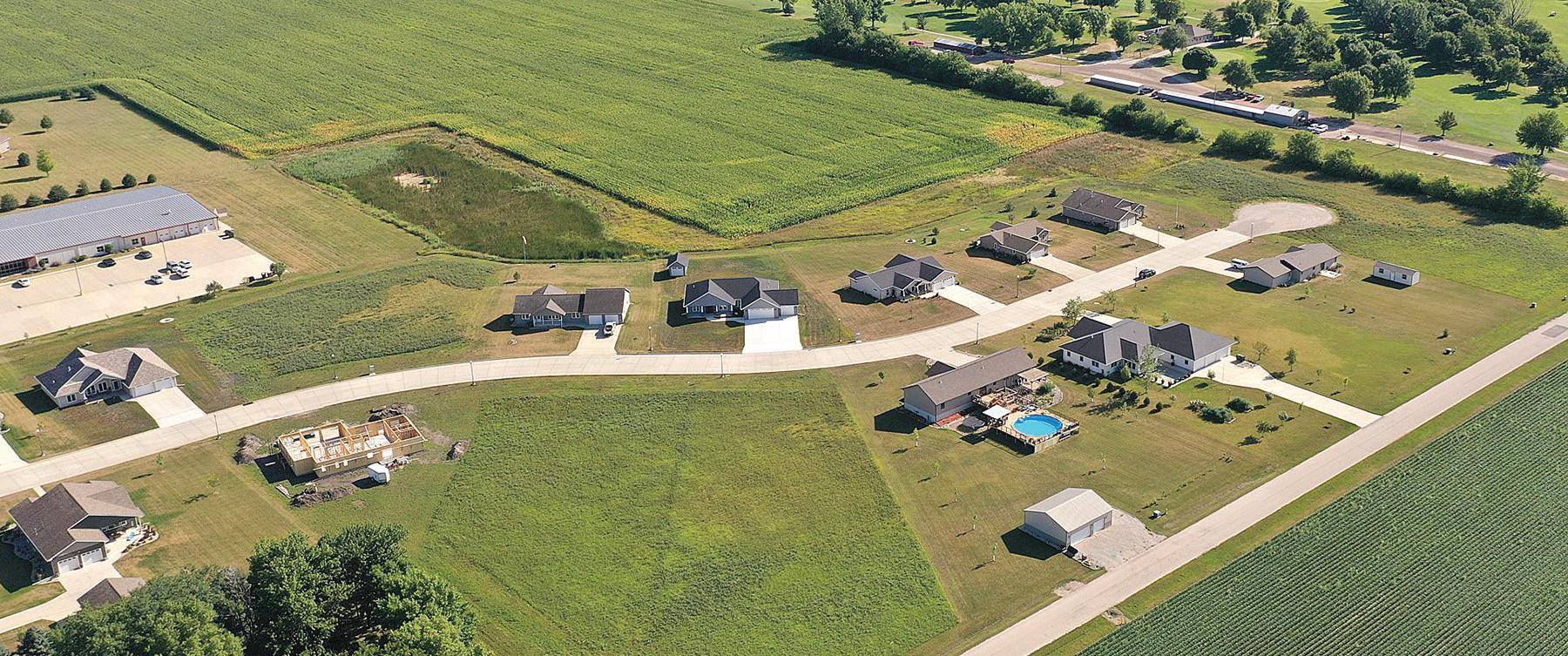
LEFT: Pocahontas hosted more than 10,000 bicyclists last summer when RAGBRAI rode through town.
we can with the land the city has to offer its residents.
“We’ve had property that has opened close to our golf course, and we have a three-phase plan to bring housing into that area which we call Prairie Estates,” she said. ”First, we opened the lots for purchasing through city meeting minutes and word of
mouth. Second, we’ve begun infrastructure planning for sewer, water, and power. Finally, we will have lots available to sell and hope to have them sold within the next 10 years.
“This is different from many other housing projects in that the owners totally decide what they want to build on the lot,” she said. “The home can be as quaint or as complex as the lot allows.”
Hallberg noted that this program isn’t just good for potential homeowners, it’s good for local contractors and the subcontractors they employ.
Another aspect of city management where Hallberg has engaged lately is in the support of the volunteer fire department.
“I recently spoke with our fire chief,” said Hallberg, who also served on the Pocahontas City Council for four years, “and we’re excited about partnering to fundraise for new air packs for our firefighters. Our firefighters put their life on the line for our community, and we want to make sure they have the best equipment when they take that ultimate risk. The cost is substantial at roughly $150,000 for this equipment, and we need to fundraise. Fortunately, our community comes together to make things happen … not just to celebrate the fun stuff like our part in RAGBRAI but to also build neighborhoods and solid civil service departments.”
 By DOUG CLOUGH editor@messengernews.net
By DOUG CLOUGH editor@messengernews.net
ROCKWELL CITY — If you live in a rural community, you know just how vital the service shops are to a town. Whether it’s your friendly insurance provider or the knowledgeable hardware store clerk, it’s businesses like these that keep small town Iowa moving forward.
Phil Heinlen has been Rockwell City’s mayor for the past 23 years, and he knows how small towns operate.
“Our town’s success is due to a strong business sector,” said Heinlen. “We enjoy a strong downtown. While other towns are seeing shuttered windows, we are proud to say that most of our stores are active and part of the fabric of Rockwell City.
“Gentry Hardware is a good example of a strong part of our business sector,” continued Heinlen. “Nathan and Emily Gentry stepped up to make sure Rockwell City wasn’t without a business that people count on locally. Hannah Taylor owns and operates Parkside Flowers and Gifts, and locals depend upon her service as well. There are many more examples.”
There was one thing, however, that Heinlen and the Rockwell City Council knew was missing — a grocery store.
“It seems like when a small-town grocery store doesn’t exist,” said Heinlen, “the community adjusts to
going elsewhere, that it’s part of their new reality. We didn’t want that to be so with Rockwell City or other residents of Calhoun County. A lack of a grocery store can have a huge impact on a town and county; a grocery store means more than just access to healthy food. Rural grocery stores also provide jobs and generate tax revenue. A county seat without a grocery store just isn’t pretty.”
And Rockwell City did what few other towns with just over 2,000 people do: they went after the “big boys.”
“We got the news out that we were looking for a grocery store to come to Rockwell City — a solid, loyal grocer — who we could count on to be around awhile,” said Heinlen. “Fareway was the first to call to say, ‘Well, let’s sit down and chat.’”
“Kelly Smidt, our city clerk, and I met with the District Manager Nick Griener,” said Heinlen, “and there was a mutually good feeling about having Fareway in Rockwell City. They are good folks. It seems that most of the head office came for the grand opening.”
Heinlen noted that Smidt’s involvement in the details was instrumental in landing Fareway Stores.
Almost a year ago, Fareway Stores hosted a ribbon-cutting ceremony at 339
See ROCKWELL CITY, Page 20D
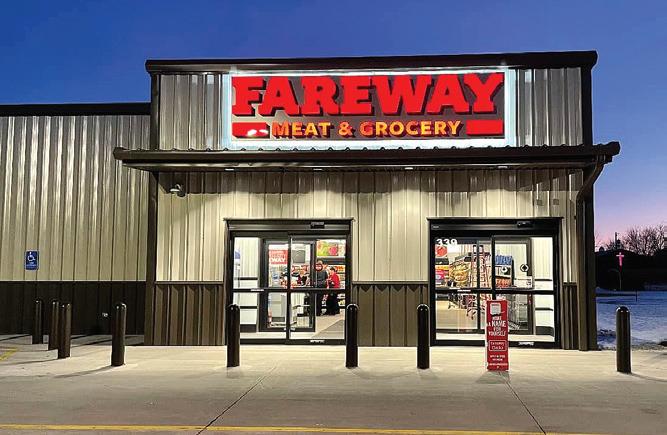

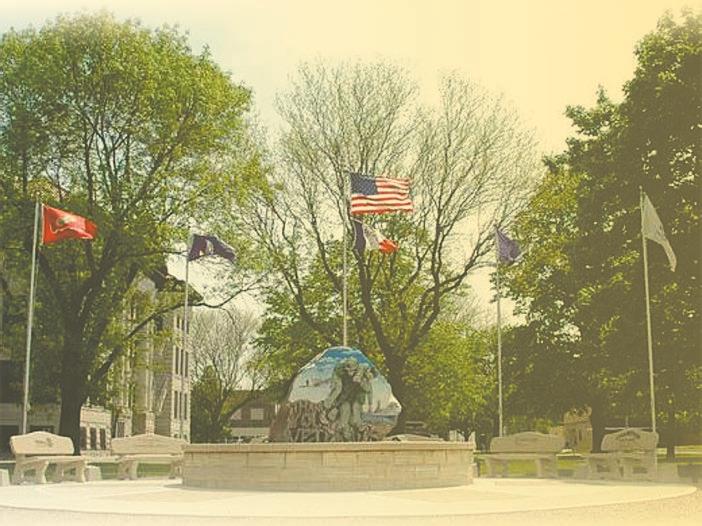
Continued from Page 19D

E. High St. in Rockwell City, and the town was all abuzz about getting quality groceries within the city limits. The location provides for an 11,000-squarefoot Fareway grocery store.
“We are excited to bring Fareway to Rockwell City and appreciate the city staff who helped make this project possible,” said Fareway President and CEO Reynolds W. Cramer. “While residents may be familiar with our stores and the exceptional customer service experience, we look forward to serving them locally and becoming an integral part of the community.”
Of course, other hallmark businesses were excited about the positive impact as well.


“On behalf of the Rockwell City Chamber and Development, I would like to enthusiastically welcome this new Fareway location to the Rockwell City community,” said Administrative Director Trish Mernka. “Fareway is an excellent addition and will pave the way for exciting new job opportunities for Rockwell City residents and Calhoun County.”




The Rockwell City Fareway is now celebrating a year in town. The grocer has already made a local impact with

their online meat market and dietary services as well as support of Rockwell City’s first responders and local food pantry this past holiday season.
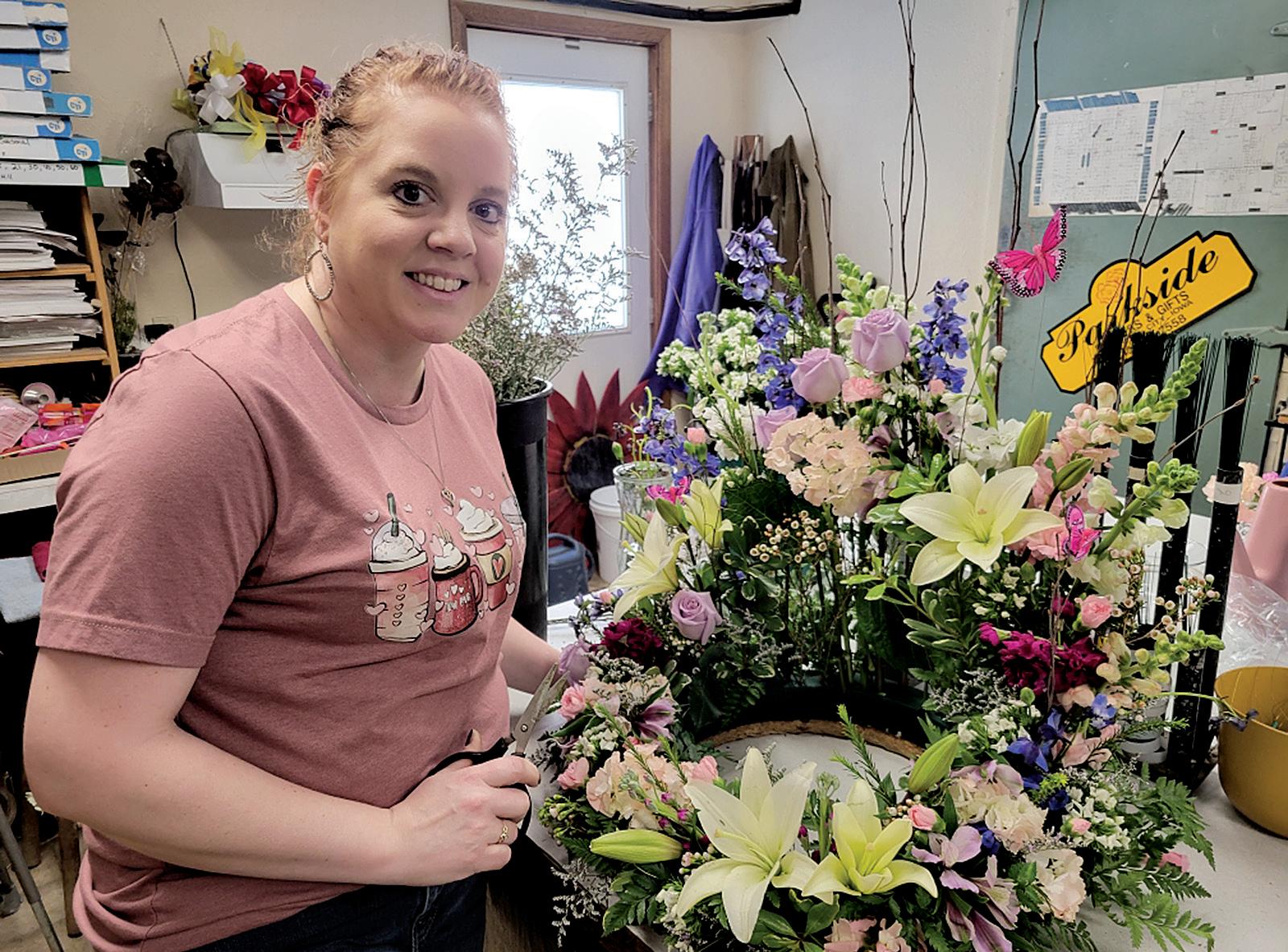







“Our town’s success is due to a strong business sector. We enjoy a strong downtown. While other towns are seeing shuttered windows, we are proud to say that most of our stores are active and part of the fabric of Rockwell City."
— Phil Heinlen, Rockwell City mayor






















